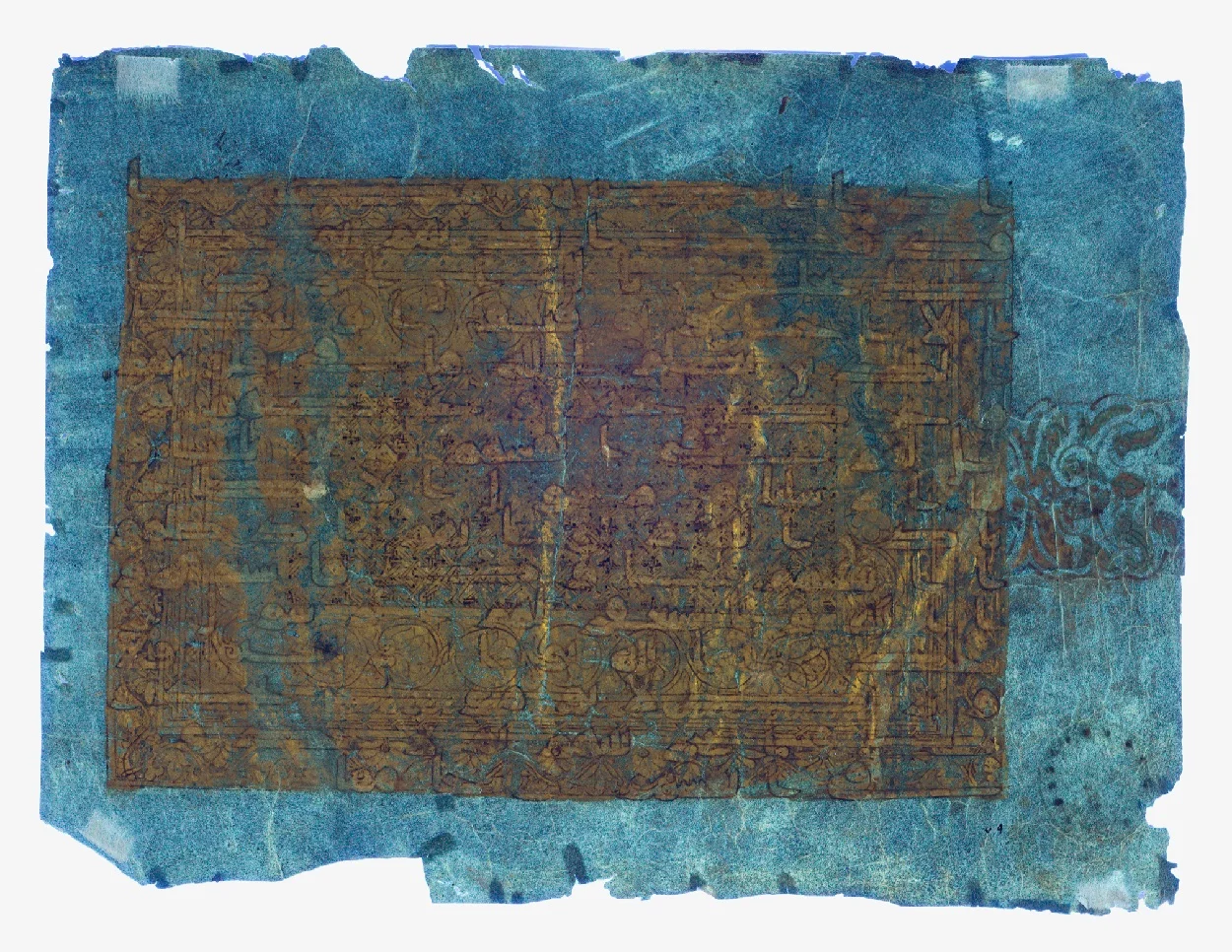Experts at the Zayed National Museum have uncovered Qur’anic verses hidden beneath a layer of gold leaf on the famous Blue Qur’an manuscript.
The Blue Qur’an, which dates back to AD 800–900, is renowned for its deep blue-dyed pages and gold Kufic script. Thought to have originated in North Africa, Iraq, or Andalusia, the manuscript was made on indigo-dyed sheepskin and originally contained 600 pages.
Currently, only about 100 pages of the manuscript have survived, which remain in private collections and museums around the world, with five pages on display at the Zayed National Museum.
By using multispectral imaging, researchers were able to identify text from the Surah al-Nisa’, which was obscured by intricate gold leaf patterns added to correct a mistake by the calligrapher without discarding the expensive indigo-dyed parchment.
The Surah al-Nisa Surah (in Arabic text: ٱلنساء) is the 4th chapter of the Qur’an that illustrates the Quran’s role as an authoritative legal source and outlines acceptable behaviour for Muslims.
According to a press statement by the museum, the discovery sheds light on previously overlooked decisions in the manuscript’s creation, providing new insights into early Islamic calligraphy.
Mai Al Mansouri, Associate Curator, Zayed National Museum, said: “Zayed National Museum’s groundbreaking research on the Blue Qur’an sheds new light on the origins and production of this important manuscript and underlines the role of the museum in the cultural and academic life of the UAE and beyond.”
“The discoveries our teams are making about the heritage of the United Arab Emirates and the broader region are profoundly significant to developing our understanding of how ideas spread across cultures, highlighting its historical role as a centre for communication and cultural exchange, and illustrating its contribution to the flow of ideas, art and knowledge between civilisations.”
Header Image Credit : Zayed National Museum
Sources : Zayed National Museum





